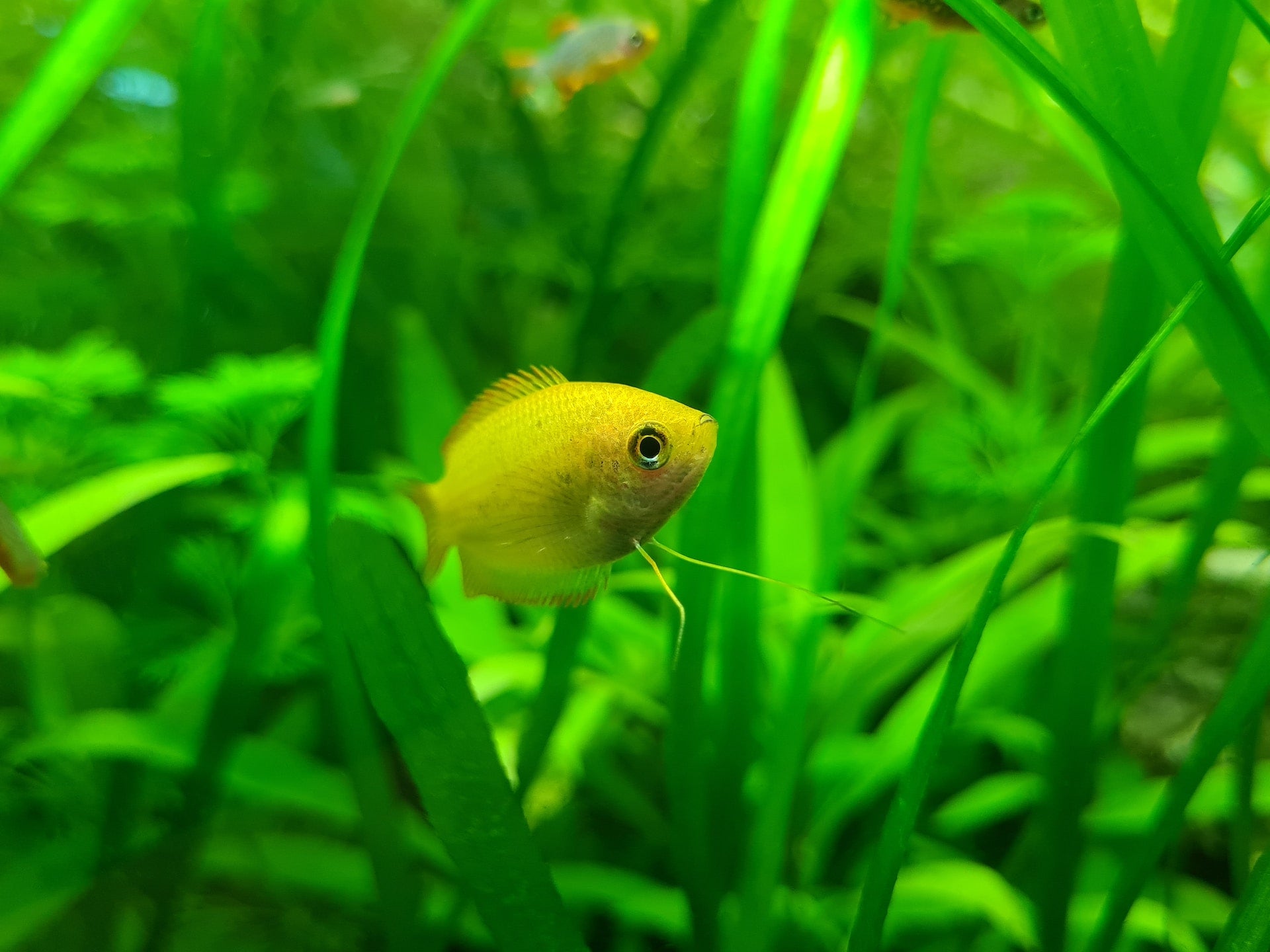Nestled within the transcendent beauty, serenity, and tranquillity of a thriving home aquarium, the unwelcome spectre of algae blooms may occasionally rear its verdant head, marring the crystalline purity of the water and clouding the pristine clarity of your painstakingly designed underwater haven. While a natural and important part of every aquatic ecosystem, unchecked and rampant algae growth can blemish the aesthetic appeal, compromise water quality, and even threaten the health of your aquarium's inhabitants.
As one of the UK's largest aquatics specialists, Perfect Aquatics is devoted to guiding aquarists in their quest to overcome the challenge of algae growth, equipping them with the knowledge, tools, and strategies essential to identify, prevent, and control the spread of various types of freshwater aquarium algae.
Our comprehensive guide on freshwater aquarium algae tackles everything from identifying the most common algae types, exploring underlying causes, and offering effective methods to maintain a clear, healthy, and visually stunning aquatic environment. Trust in the unwavering passion, unrivalled expertise, and steadfast support of the Perfect Aquatics team, who will be by your side, sharing their wisdom and experience to help you conquer the algae problem and restore your aquarium to its full, immaculate splendour.
Identifying Common Freshwater Aquarium Algae Types
Acquaint yourself with these prevalent types of freshwater aquarium algae that may appear in your underwater oasis:
- Green Algae: Often harmless and easily controlled, green algae encompass various forms, such as suspended, filamentous, and surface types. Green algae may manifest as a greenish hue in the water, fuzzy tufts on surfaces, or dense mats.
- Brown Algae (Diatoms): Brown algae, or diatoms, typically emerge in new aquariums or poorly lit environments. They form as a light to dark brown, slimy film or blanket covering surfaces, and are easily wiped off.
- Blue-Green Algae (Cyanobacteria): Although not technically algae, cyanobacteria are called blue-green algae, forming slimy, smelly mats or film on surfaces. They can be toxic to aquarium inhabitants and should be dealt with swiftly.
- Black Beard Algae (BBA): Black Beard Algae is a particularly tenacious type of algae that forms dark, dense tufts resembling hair on various surfaces. It can be challenging to eradicate and often requires drastic control measures.
Unveiling the Causes of Persistent Algae Growth
Acknowledge the primary factors leading to algae growth, enabling you to tackle the root causes:
- Nutrient Imbalance: Excessive amounts of nutrients, primarily phosphates and nitrates, can fuel algae growth. Overfeeding, decaying organic material, and insufficient water changes may exacerbate this imbalance.
- Poor Water Quality: Imbalanced water chemistry, such as incorrect pH, high ammonia levels, or inadequate water hardness, can contribute to algae blooms. Regular water testing and changes can help maintain optimal water quality.
- Excessive Lighting: Algae thrive in illuminated environments, and leaving the aquarium lights on for too long or placing the tank near sunlight can result in overgrowth. Adhere to a consistent daily light cycle to mitigate this risk.
- Inadequate algae control: Insufficient introduction of natural algae-eating organisms or inadequate mechanical filtration may contribute to persistent algae problems. Introduce algae-eating species, such as snails, shrimp, or fish, and ensure your filtration system works effectively.
Effective Strategies for Freshwater Aquarium Algae Control
Implement these strategies to combat algae growth and create a pristine aquatic environment successfully:
- Regular Maintenance: Diligent upkeep, including water changes, gravel vacuuming, filter maintenance, and removal of debris and dead plant matter, helps maintain water quality and prevents excessive nutrient buildup.
- Proper Feeding Practices: Overfeeding contributes to nutrient imbalance and poor water quality. Feed your fish modestly, ensuring food is consumed within a few minutes to avoid waste accumulation.
- Optimise Lighting: Establish a consistent, optimal daily light cycle, avoiding direct sunlight exposure. Consider investing in a timer to automate this process and prevent excessive light exposure, encouraging algae growth.
- Introduce Algae Eaters: Algae-eating fish, snails, or shrimps can act as your aquarium’s natural custodians, voraciously consuming various algae. Select appropriate species that align with your specific aquarium size and inhabitants.
- Employ Live Plants: Live aquatic plants actively compete with algae for resources, such as light and nutrients. Introducing a diverse array of live plants to your aquarium enhances its appearance and aids in naturally suppressing algae growth.
Prevention: The Key to Long-Term Algae Control Success
Instead of merely tackling algae outbreaks as they emerge, focus on implementing preventative strategies:
- Monitor Water Parameters: Regularly test your aquarium's water chemistry to detect imbalances or unsuitable conditions, promptly addressing any issues to prevent the emergence of burgeoning algae blooms.
- Maintain Stable Nutrient Levels: Diligently perform regular water changes to manage nutrient levels, preventing the overaccumulation of compounds known to fuel algae growth.
- Evaluate Lighting Conditions: Establish a consistent lighting regimen, ensuring that your aquarium's light cycle remains within an optimal range, preventing excessive light exposure that may favour algae proliferation.
Conclusion
As you journey into the mystical, bewitching realm of home aquariums, arm yourself with the essential tools, knowledge, and strategies needed to triumph over the tenacious growth of algae and uphold the beauty, cleanliness, and clarity of your cherished underwater sanctuary. Rely on the unyielding passion, unwavering support, and distinguished expertise of the Perfect Aquatics team, who will guide, inspire, and accompany you on this rewarding adventure, illuminating the path to an algae-free, resplendent oasis teeming with life, harmony, and captivating allure.
Unearth the secrets of preventing and controlling persistent algae growth with the help of Perfect Aquatics, your esteemed ally in preserving the awe-inspiring beauty, pristine clarity, and extraordinary wonder of your treasured aquatic haven.

